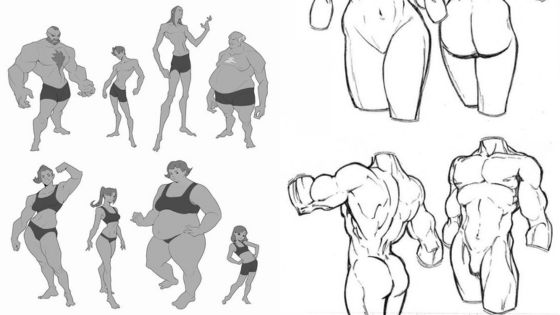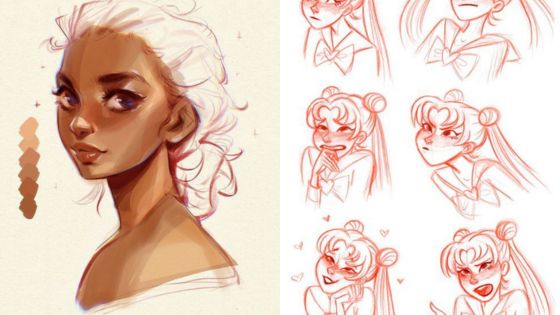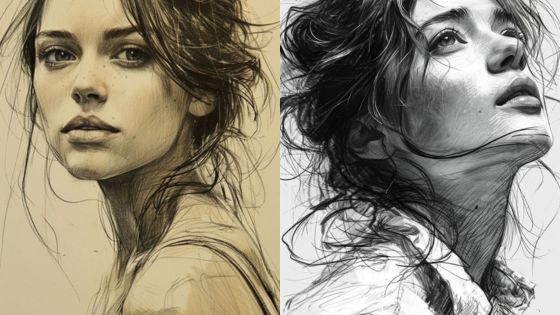Body drawing is a fundamental skill that can elevate any artist’s repertoire. Understanding the basic proportions and structure of the human body is crucial for creating realistic and expressive figures. By grasping these concepts, artists can effectively communicate movement and emotion through their drawings.
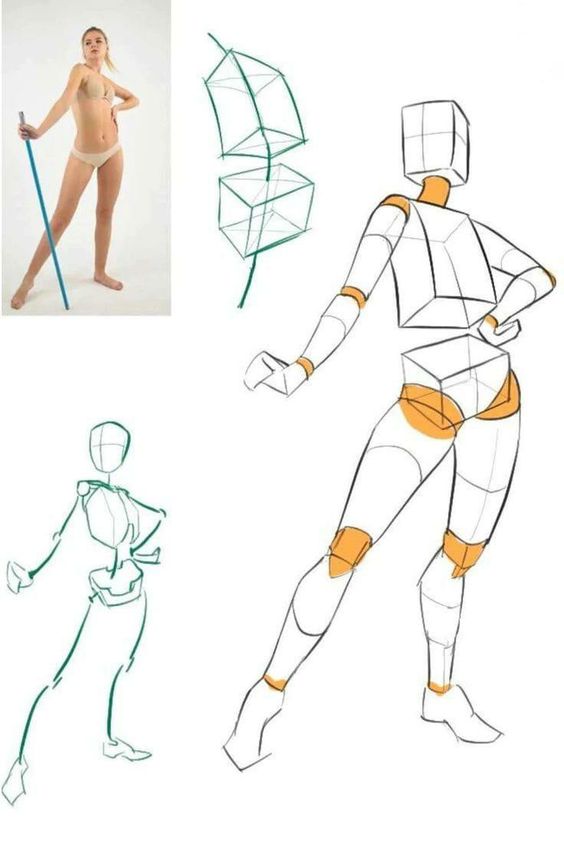
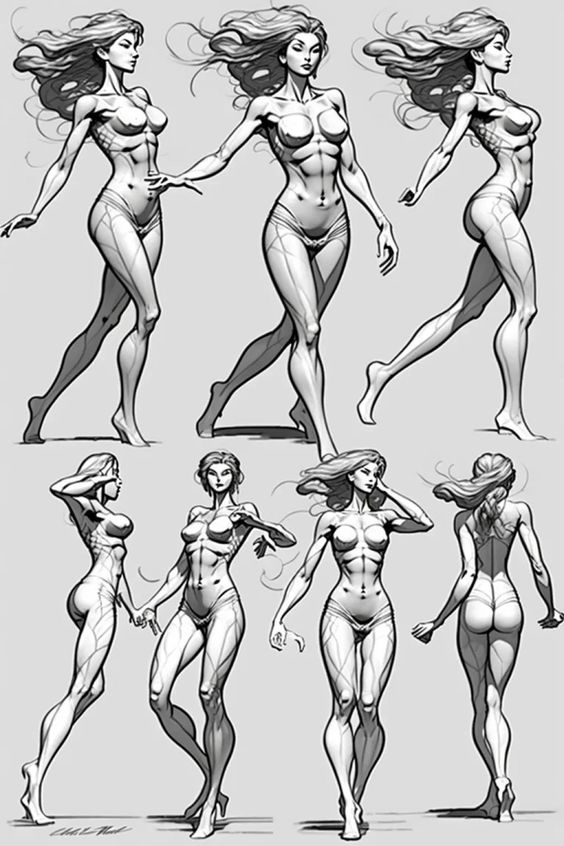
Starting with basic shapes lays the groundwork for exploring more complex forms. Mastering gesture drawing enables artists to capture dynamic poses, while refining details enhances the overall representation of the human figure. With consistent practice and a focus on anatomy fundamentals, artists can develop their unique styles and improve their skills over time.
Key Takeaways
- Mastering body proportions is essential for realistic figure drawing.
- Gesture drawing captures movement and liveliness in art.
- Consistent practice leads to continuous improvement in body drawing skills.
Understanding Body Proportions
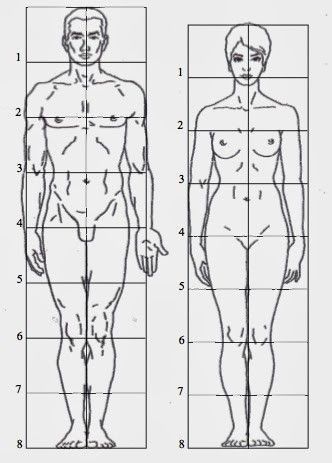
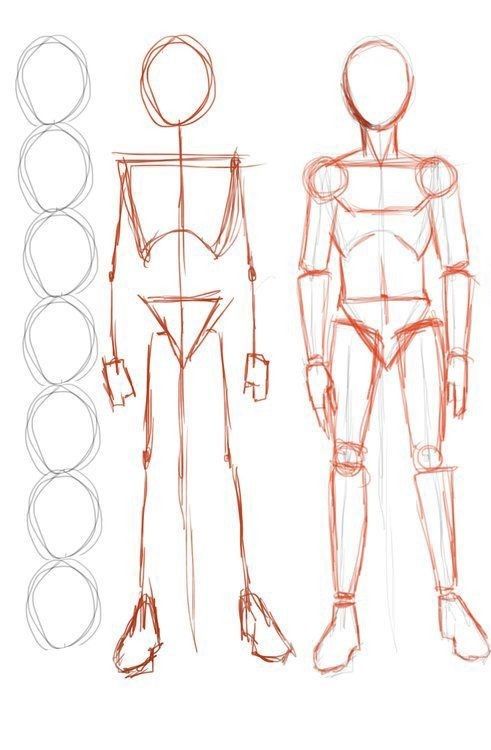
Body proportions are essential in art and figure drawing as they establish the relationship between different body parts. Understanding these proportions allows for more accurate and realistic representations of the human form, whether depicting male or female figures.
Proportional Guidelines
To achieve accurate body proportions, many artists use established guidelines. One widely recognized method is to measure the body in “head units.” Typically, an average adult human figure measures about 7 to 8 heads tall.
Key Measurements:
- Torso: Approximately 2.5 to 3 heads from neck to waist.
- Legs: Generally measure around 4 heads from waist to feet.
- Arms: Typically the same length as the head from shoulder to fingertip.
Using these proportional relationships helps maintain balance and realism. Individual variations, influenced by age, height, and fitness level, can adjust these guidelines for specific characters.
Male vs Female Proportions
When drawing male and female figures, distinct proportional differences emerge. Understanding these distinctions allows the artist to create more believable depictions.
Male Proportions:
- Men usually have broader shoulders and narrower hips.
- The waist is typically smaller relative to the shoulders, creating a V-shape.
- Average male figures often appear taller and more angular.
Female Proportions:
- Women generally possess wider hips and narrower shoulders.
- The body tends to form an hourglass shape with a defined waist.
- Female figures may appear shorter with softer, rounded features.
Recognizing these differences is critical for effectively capturing the essence of male and female forms. By applying these principles, artists can create more accurate representations of the human body.
Anatomy Fundamentals
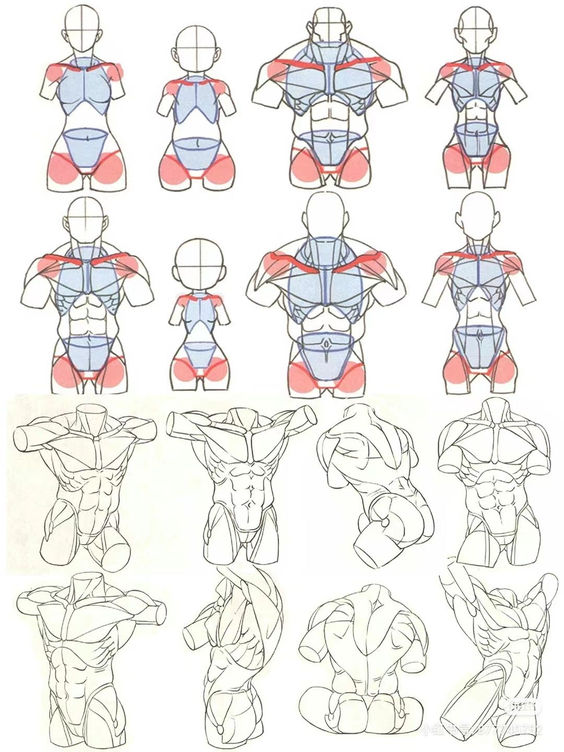
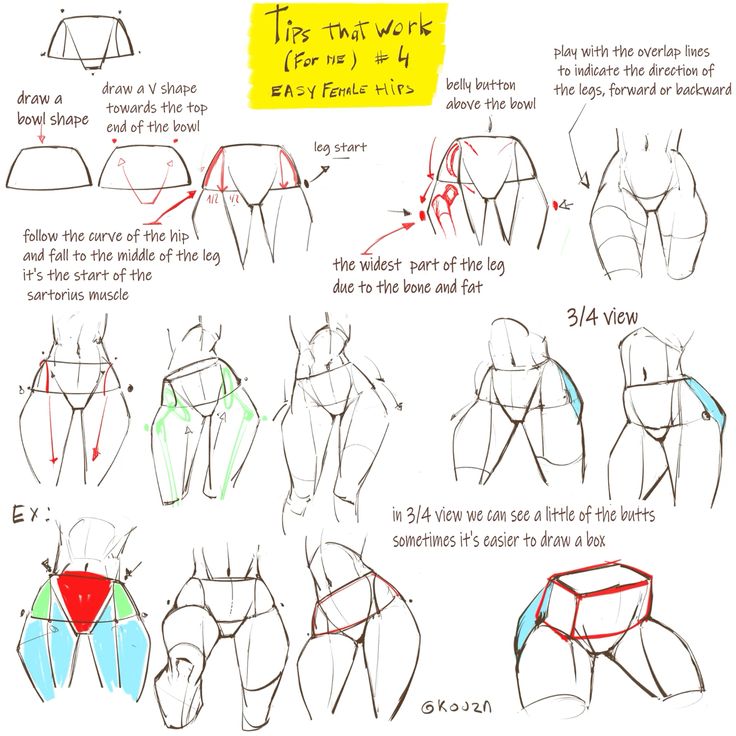
Understanding anatomy is crucial for artists aiming to create accurate and life-like figures. This section emphasizes the skeletal and muscle structures that form the foundation of the human body, focusing on their significance in drawing an anatomically correct figure.
Skeletal Structure
The skeletal system provides the framework for the body. Comprising 206 bones in adults, it supports and protects vital organs. Key areas include the skull, spine, rib cage, and limbs.
- Skull: Houses the brain and protects it.
- Spine: Facilitates movement and balance.
- Rib Cage: Protects heart and lungs while aiding in respiration.
Artists should note the proportions and landmarks, such as the curvature of the spine and the angle of the ribs. These details contribute to a more convincing representation of the human form.
Muscle Structure
Muscles are integral for movement and stability, accounting for the body’s shape. Understanding muscle definition helps in achieving realistic poses and dynamics in drawing.
- Major Muscle Groups:
- Deltoids: Shoulders that provide arm mobility.
- Pectorals: Chest muscles that assist in arm movement.
- Biceps and Triceps: Important for arm flexion and extension.
- Abdominals: Central to a stable core and posture.
When artists capture muscle structure, it creates depth and dimension. Observing how muscles interact during movement enhances the accuracy of body drawings. Recognizing these muscular connections contributes significantly to illustrating dynamic and realistic figures.
Starting with Basic Shapes
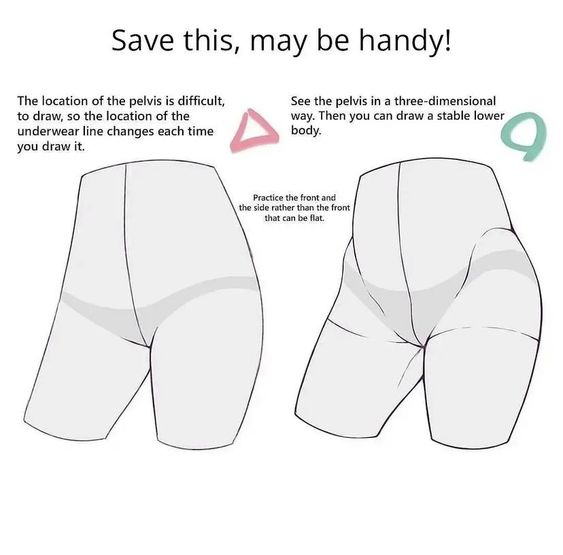
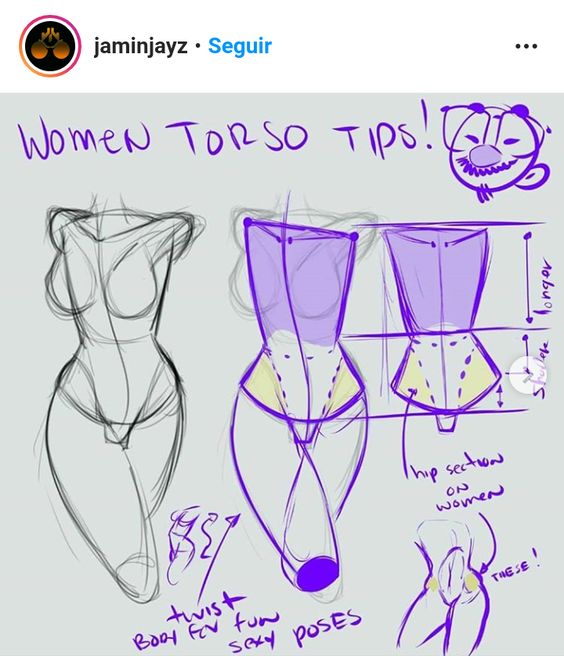
When approaching body drawing, understanding the basic shapes is essential for constructing accurate human forms. This technique simplifies complex structures into manageable components, leading to more effective and realistic figures.
Head and Face Construction
To begin with the head, artists often use an oval shape to represent the overall form. This oval serves as the foundation for facial features. The face can be divided into three sections: the top third represents the forehead, the middle third the eyes and nose, and the lower third the mouth and chin.
To refine the facial structure, it’s crucial to incorporate guidelines. Vertical lines help position the nose and mouth, while horizontal lines can indicate where the eyes will sit. The ears typically align with the eyes, extending from the top of the oval down to the bottom of the nose.
In addition to the oval, shapes like the trapezium can assist in creating more angular features, such as the jawline. By manipulating these basic forms, an artist can achieve various expressions and head orientations.
Torso and Pelvis
The torso typically consists of a combination of rectangles and ovals. Starting with a rectangle for the chest, artists should observe proportions, typically emphasizing width in males versus a more tapered shape in females. Below the chest, the oval shape for the pelvis provides the next step in establishing the human form.
Connecting the chest and pelvis accurately is key. This is best achieved through smooth, curved lines that represent the spine and ribcage. Observing how the ribcage narrows into the waist is vital for proportion.
Additionally, the dimensions between the chest and pelvis can be guided by the relationship between body parts, allowing the artist to maintain consistent proportions throughout the figure. By utilizing these basic shapes, an artist lays the groundwork for constructing a convincing human form.
Capturing Gestures and Poses
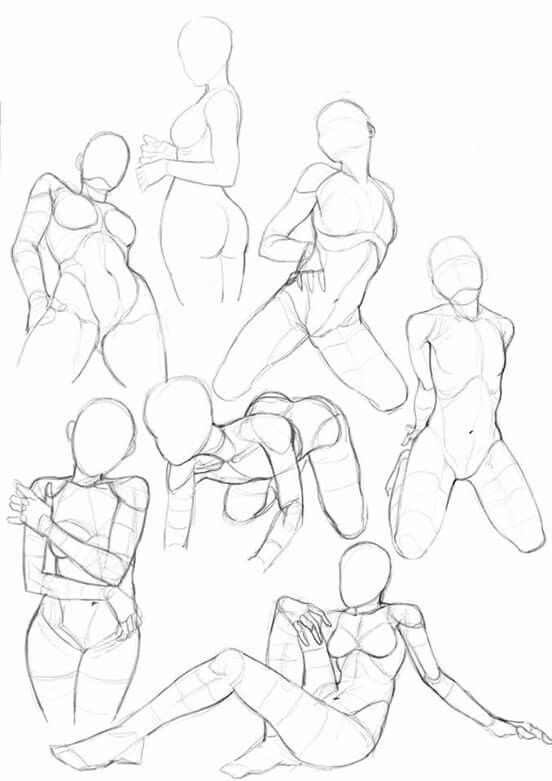

Capturing the essence of movement through gestures and poses is essential for artists aiming to depict the human figure accurately. Understanding the differences between dynamic and static poses allows for a more nuanced approach to anatomical drawing and expression.
Dynamic Poses
Dynamic poses convey a sense of movement and energy. They often depict action, emphasizing the flowing lines and curves of the body. When capturing a dynamic pose, an artist should focus on the major forms—the torso, arms, and legs—to see how they relate to each other.
Using gesture drawing techniques, the artist can quickly sketch the action, capturing essential movements without getting bogged down in details. Effective body language and expressive actions can be illustrated through long, sweeping lines. Curved lines often portray motion better than straight ones.
Incorporating anatomical knowledge can enhance the accuracy of the depiction, showing how muscles engage during different actions. By focusing on key expressions and stances, the artist can communicate emotion and intent in their work.
Static Poses
Static poses, in contrast, emphasize stillness and stability. They allow an artist to explore the human figure in a fixed position, showcasing proportion and symmetry. When drawing a static pose, the artist must pay close attention to the alignment of the body, ensuring that each part is proportionate to the rest.
Anatomical drawing is crucial here; artists should analyze the structure of bones and muscles to accurately render these poses. Attention to subtle details, such as the placement of hands and the tilt of a head, is paramount in conveying a believable stance.
Static poses can also capture expressions and body language, reflecting emotions and storytelling elements. Using a balanced approach allows for a deeper exploration of the figure, inviting viewers to contemplate the moment being depicted.
Detailing the Human Form
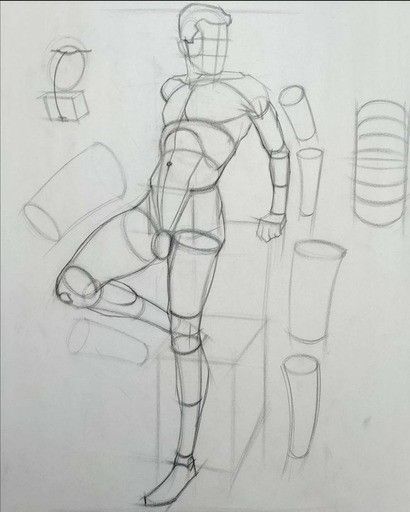
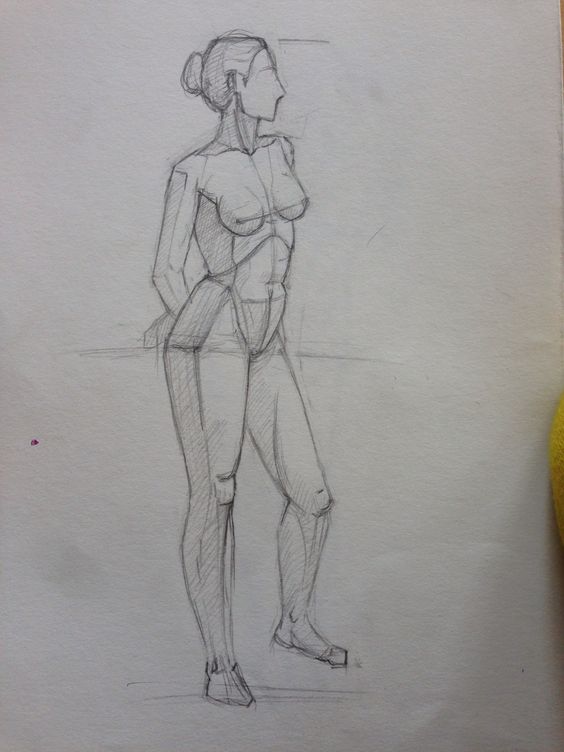
Accurate detailing enhances the representation of the human form, focusing on two key areas: the face and the limbs. Attention to these elements adds depth and realism to drawings.
Rendering the Face
Creating a detailed face involves careful observation of facial features and proportions. The artist should start with a basic oval shape, refining it into a more realistic structure. Key features include the eyes, nose, and mouth, each requiring particular attention to proportions and placement.
- The eyes should be about one eye-width apart. A realistic eye includes details like iris and pupil shading.
- When drawing the nose, focus on its shape and shadows. It should connect naturally to the brow and mouth.
- For the mouth, consider the shape and curvature of the lips. Adding subtle wrinkles around the mouth can enhance realism.
Expressions can also change the appearance of the face, so practicing different emotional states is essential.
Drawing Limbs and Extremities
Limbs are crucial in conveying movement and balance. Start with basic shapes—cylinders for arms and legs—then build on them with muscle structure.
- The arms should feature a sense of proportion, tapering toward the wrists and incorporating details around the elbows.
- The hands can be complex; artists should focus on the positioning of fingers and knuckles for realism. Practicing various gestures will improve hand depiction.
- Legs should also be proportionate, with attention to the structure of the calves and thighs. The feet must reflect stability and should be drawn in perspective to convey weight.
Every detail contributes to the overall impact; thus, practice and observation are essential in capturing the nuances of the human body.
Illustration Techniques
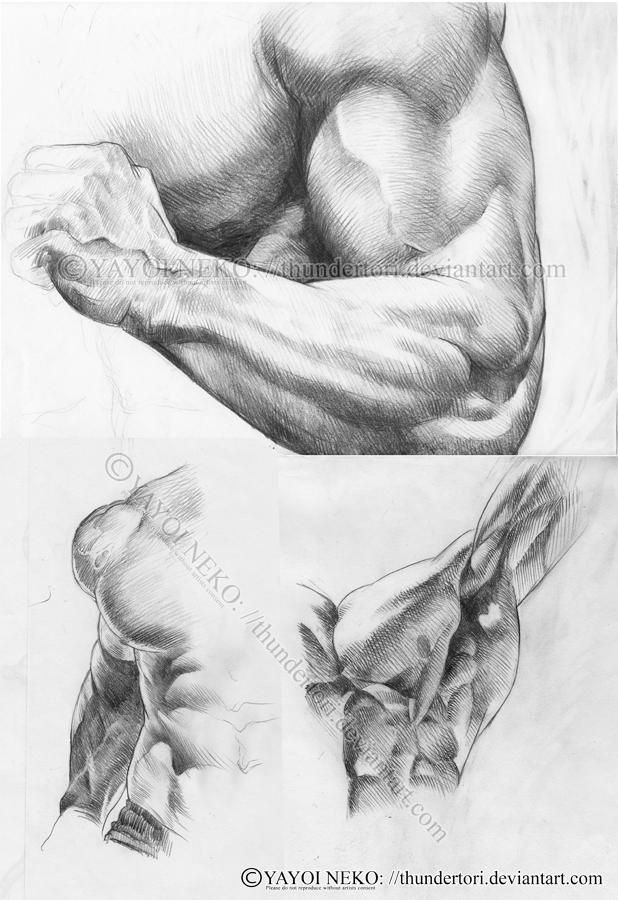
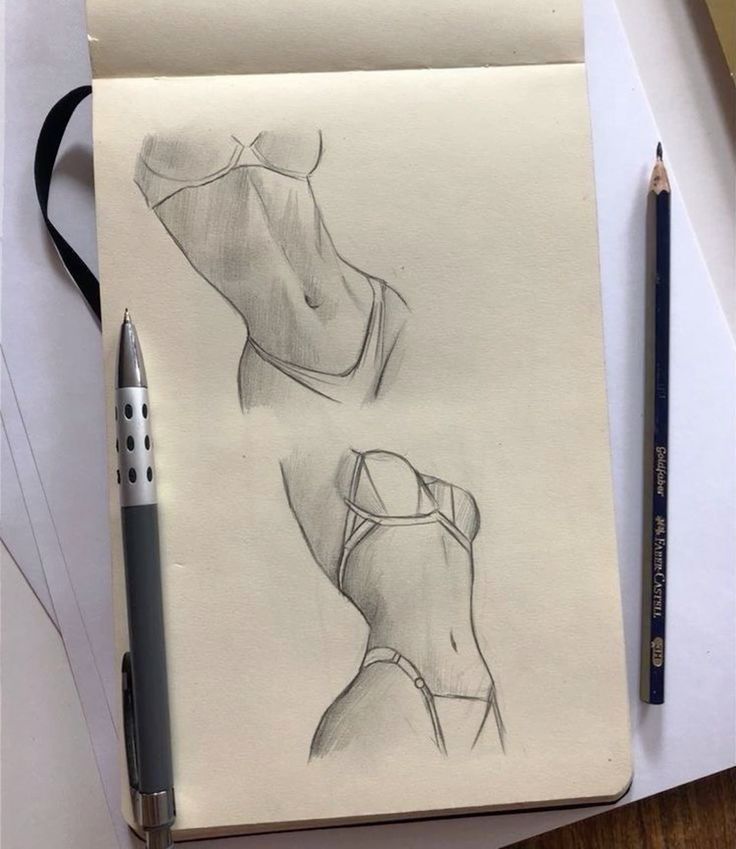
Understanding essential illustration techniques significantly enhances body drawing skills. Focused efforts in sketching and character design can lead to more dynamic and accurate representations.
Sketching and Shading
Sketching forms the foundation of effective body drawing. Using a light pencil, the artist begins with basic shapes to outline the figure. This approach allows for adaptable proportions and poses.
Once the initial sketch is complete, the emphasis shifts to shading. Proper shading techniques can add depth and dimension to the drawing. Artists can use techniques such as cross-hatching and stippling to create texture. Tip: Gradually build layers of shading to avoid overpowering the sketch too soon. Observing human anatomy while sketching helps capture realistic features.
Character Design
Character design is crucial for creating compelling and relatable figures. Artists need to define the character’s personality and story through their design choices. Starting with rough sketches, they can explore various attributes such as posture, clothing, and facial expressions.
Incorporating distinct features can lend uniqueness to characters. For instance, varying proportions can be used to signify different personality traits. Tip: Study existing characters for inspiration, but always aim for originality. Furthermore, color can play a significant role in character design, influencing how viewers perceive the character’s emotions and intentions.
Selecting Art Materials
Choosing the right art materials can significantly impact the quality of body drawings. The selection process involves understanding the types of paper and the importance of an eraser in the drawing journey.
Choosing the Right Paper
The choice of paper is fundamental in achieving desired results. A heavier paper, such as 200-300 gsm, offers durability and prevents bleeding, making it ideal for pencil drawings. This thickness allows for detail without tearing easily.
For fine lines, a smooth finish can be beneficial, while textured paper, often referred to as “toothy,” helps grip pencil strokes, adding dimension to the work.
Artists often prefer sketching paper for practice but may opt for premium quality paper for final pieces.
Quality matters here. Investing in art paper from reputable brands ensures better performance and longevity.
Using the Eraser Effectively
An eraser is a vital tool in body drawing. It allows for corrections and refinement of lines, which is essential for accurate shapes and proportions.
Artists should consider having different types of erasers:
- Kneaded Erasers: These moldable erasers are excellent for lightening areas without removing all pencil marks.
- Vinyl Erasers: These are firmer and ideal for cleanly lifting off pencil without smudging.
Using an eraser should be a deliberate action. Instead of scrubbing hard, gentle lifting can preserve the paper’s texture and integrity.
Maintaining a clean workspace with a proper eraser ensures a more focused and enjoyable drawing experience.
Drawing Practice and Progression

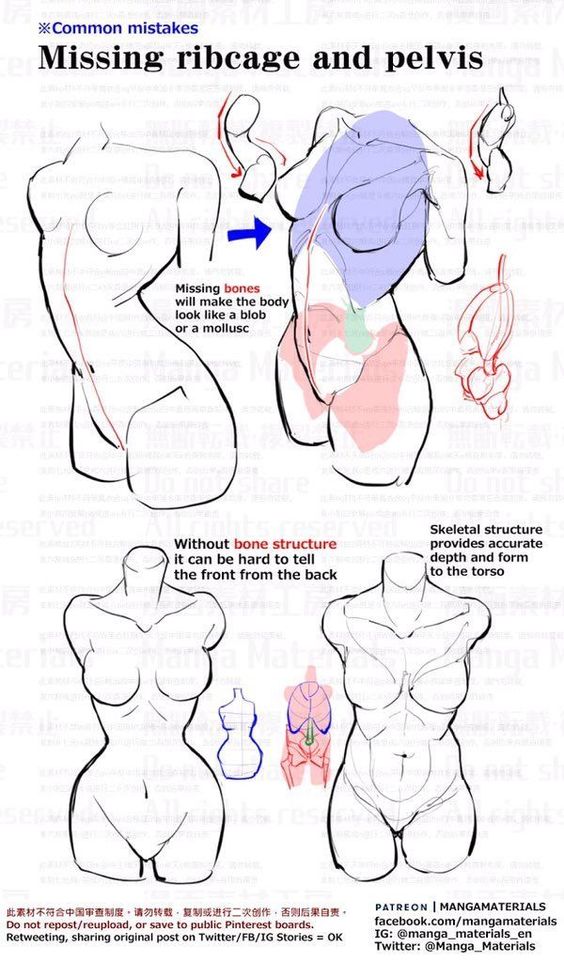
Improvement in body drawing is a process that depends heavily on consistent practice and self-assessment. Focusing on these elements enables artists to refine their techniques and understand anatomy better.
Regular Practice
To enhance drawing skills, engaging in regular practice is essential. Artists should set aside dedicated time for drawing each day, even if it’s just for 15-30 minutes. This helps build muscle memory and reinforces learning.
Utilizing various resources, such as online tutorials, can provide structured guidance. These resources often cover important techniques, like measuring proportions and capturing poses. For example, artists can learn how to draw bodies by starting with basic shapes and gradually adding details.
Creating a routine can also involve working from reference images. This practice helps in understanding how different body parts relate to one another. Observing real-life poses and studying human anatomy helps improve accuracy and develops a keen eye for detail.
Self-Assessment
Self-assessment is a critical part of developing as an artist. After each drawing session, artists should take the time to evaluate their work. This may involve comparing drawings against reference materials or tutorials.
They should look for common mistakes, such as incorrect proportions or awkward poses. Keeping a sketchbook to document progress over time is beneficial. It allows artists to look back at their earlier work and see improvements.
Seeking feedback from peers or online communities can also provide fresh perspectives. Constructive criticism can highlight areas needing focus and inspire new techniques to try. Tracking progress enables artists to set goals, whether refining a specific aspect of their drawing technique or mastering a style.
Exploring Artistic Styles
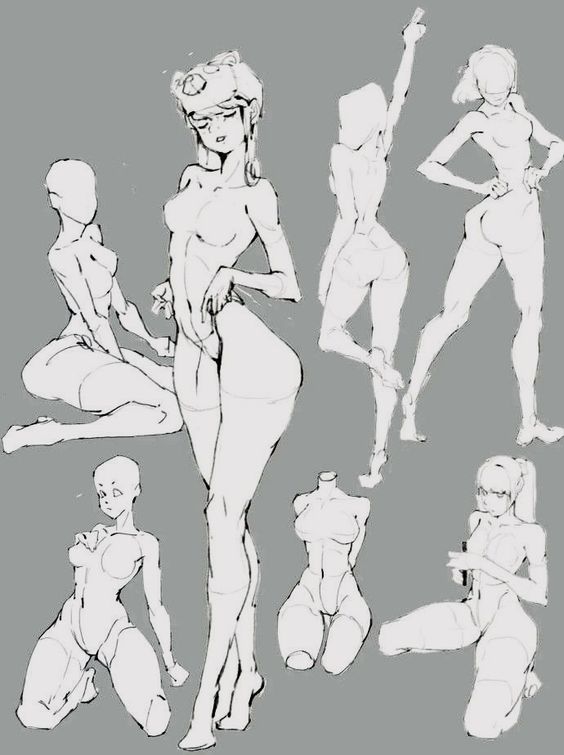

Artistic styles in body drawing significantly influence how figures are represented. Different approaches serve distinct purposes, from capturing reality to creating imaginative characters. Understanding these styles can enhance an artist’s versatility and expression.
Realism and Anatomy
Realism strives for accuracy in depicting the human figure. Artists study anatomy to ensure that proportions and details are lifelike. This involves understanding muscle structure, skeletal systems, and the natural weight and movement of the body.
When drawing a body in a realistic style, it is essential to focus on:
- Proportions: Correctly proportioned figures make the artwork believable.
- Light and Shadow: These elements add depth and dimension.
- Texture: Skin, hair, and fabric textures contribute to realism.
Artists often reference techniques from the Renaissance, where anatomy was explored through both art and science. Mastery in realism allows them to create compelling compositions that capture the viewer’s attention.
Cartoon and Simplification
Cartoon style embraces exaggeration and simplification, often prioritizing expression over realism. In this approach, features may be distorted or exaggerated to convey emotions or personality effectively. Artists focus on creating memorable characters rather than perfect anatomical accuracy.
Key aspects to consider in cartoon drawing include:
- Bold Lines: Strong outlines help define shapes and characters.
- Limited Detail: Simplifying features aids in recognition and believability.
- Dynamic Poses: Characters in action often use exaggerated lines to suggest movement.
This style can appeal to various audiences, allowing for creativity in character design. By mastering cartoon techniques, artists can develop unique styles while engaging viewers in imaginative narratives.
Perspective and Foreshortening
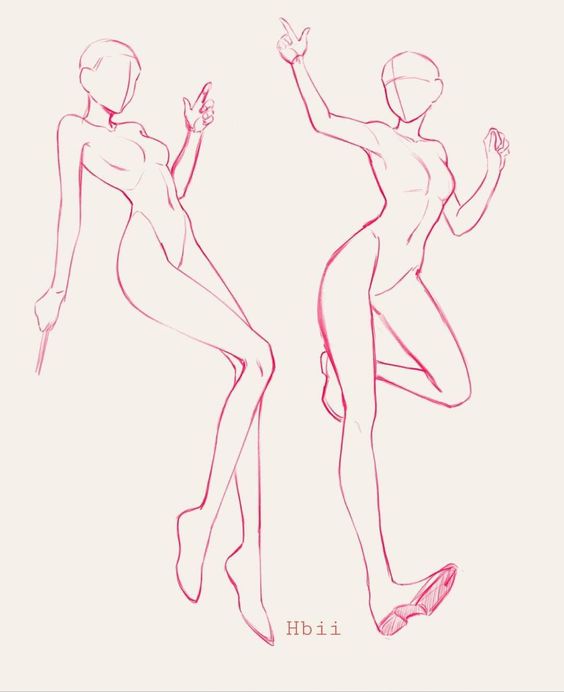
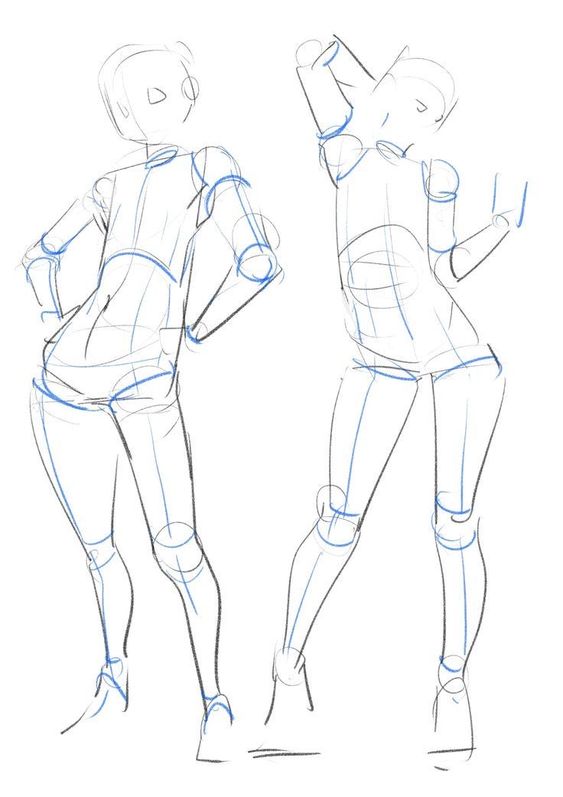
Understanding how to represent the human figure in different perspectives is critical for artists. Mastering techniques like foreshortening allows for a dynamic and realistic depiction of the body.
3/4 and Profile Views
When drawing in a 3/4 view, the figure is turned slightly toward the viewer, showing more depth and dimension. This position highlights the curvature of the torso and the angles of the limbs.
A profile view, on the other hand, displays the figure from the side. This perspective emphasizes the vertical line from head to toe, showcasing the outline of the body without distortion.
Artists should pay attention to how features shift in these views. For example: the nose and forehead protrude further in profile compared to a frontal view. Practicing both angles helps develop a deeper understanding of form and proportion.
Understanding Foreshortening
Foreshortening is a technique used to depict an object or figure in a picture in depth. By shortening the length of parts of the subject that are further away, artists create an illusion of perspective.
In body drawing, the arms and legs may appear drastically shorter depending on the angle. For instance, when an arm reaches toward the viewer, it should be drawn shorter than it appears to maintain proportion.
Using visual aids, such as grid systems, can help in correctly applying foreshortening. The artist must visualize how the body would look under these conditions, incorporating curves and angles that align with the perspective. This technique adds realism and dynamism to the artwork, making it more engaging for viewers.
Advanced Concepts in Body Drawing
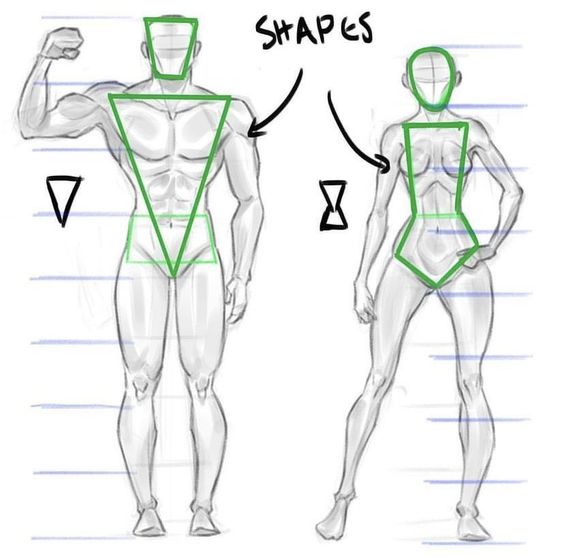
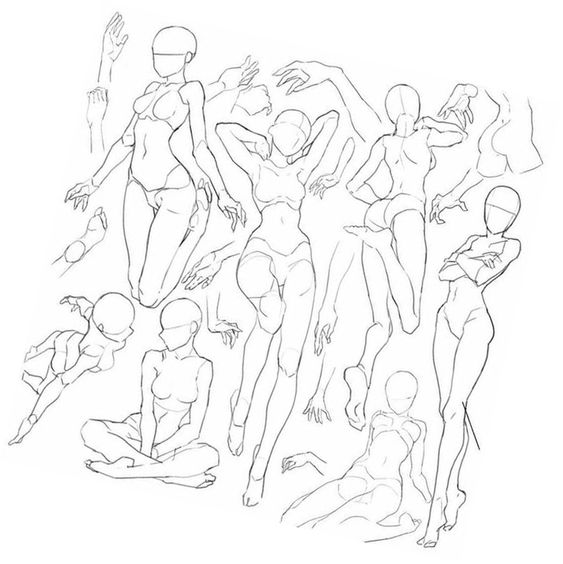
Successful body drawing extends beyond basic shapes. Understanding bone and joint articulation, along with techniques to create depth and volume, is essential for producing realistic representations of the human form.
Bone and Joint Articulation
Anatomy involves complex connections between bones and joints. The shoulder joints, knee joints, and wrist joints play crucial roles in movement and pose.
When depicting the upper arm, artists should consider how the shoulders connect through the shoulder joints, affecting the positioning of the forearms. The ribcage also influences the upper body’s posture, impacting the waist and hips.
Each joint allows for various movements, so understanding the angles and rotations is vital. For instance, when the arm moves, it affects the alignment of the ankle and the entire leg. Pay attention to how these connections affect balance and weight distribution in a drawing.
Creating Depth and Volume
To create a sense of depth in body drawing, artists must apply shading and perspective effectively. Techniques such as using highlights to define curves can enhance the three-dimensionality of the form.
Utilizing light and shadow emphasizes the spine‘s curvature and the body’s major areas—such as the ribcage, waist, and hips. Using various line weights and shading techniques can represent depth.
Incorporating shapes that suggest roundness is vital. The knees, elbows, and shoulders, when drawn with careful contouring, can illustrate volume. Finally, positioning elements such as eyes at a realistic angle adds dimensionality and realism to the figure.
Ethics and Representation in Figure Drawing
In figure drawing, considerations around representation and ethics are vital. Artists must be mindful of diversity in character representation and the ethical implications of their work.
Diversity in Character Representation
Incorporating a variety of body types, ethnicities, and genders in figure drawings enriches the art form. Artists should aim to depict not only the traditional male and female bodies but also showcase non-binary and diverse representations. This approach broadens the audience’s understanding and appreciation of human form.
Moreover, using models from varied backgrounds helps dismantle stereotypes and fosters inclusivity. By representing different skin tones, ages, and body shapes, artists contribute to a more balanced portrayal of humanity. This consideration reflects the diversity of the world and allows audiences to connect with art on a deeper level.
Ethical Considerations
Ethical considerations in figure drawing involve consent and respect for models. Artists should always ensure that they have permission to draw from live models, particularly when the work is to be shared publicly or commercially. This respect fosters a positive environment and upholds the dignity of the models involved.
Additionally, artists must be cautious about how they represent bodies. Misrepresentation can perpetuate harmful stereotypes or unrealistic standards. Therefore, capturing the essence of the body without objectifying it is crucial. Prioritizing authenticity over idealization contributes to a more humane and respectful artistic practice.
- 13.2Kshares
- Facebook0
- Pinterest13.2K
- Twitter0
- Reddit0
